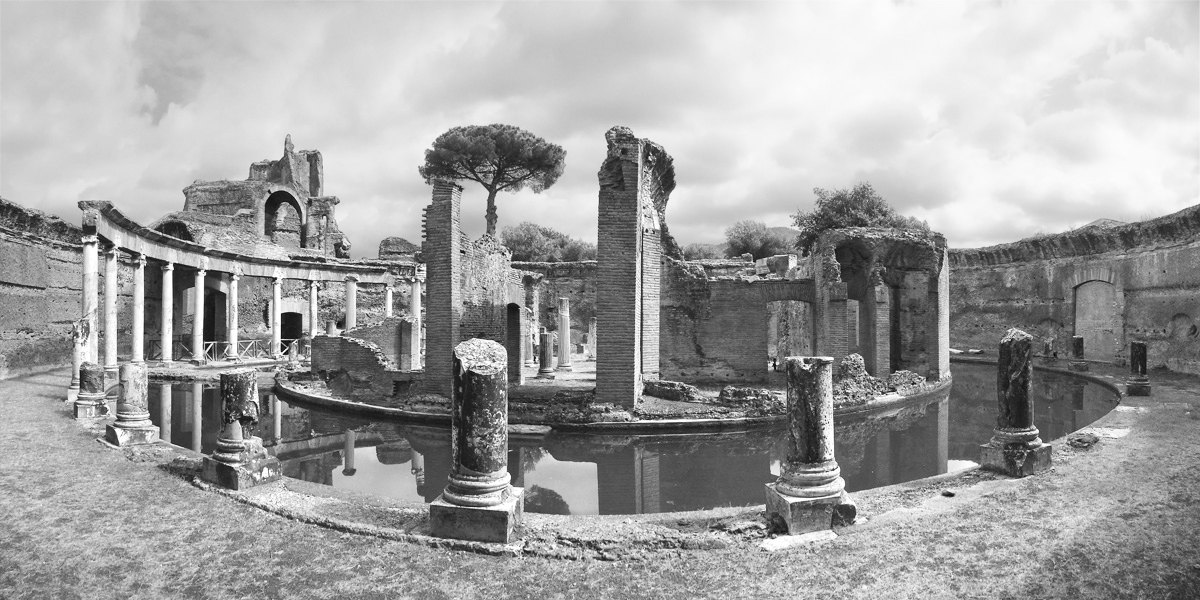Photo: Archaeological evidence found in Hadrian’s Villa reveals new information about ancient Roman culture. Courtesy of Creative Commons.
Emperor Hadrian has been recorded in the annals of history as being a complex, benevolent dictator. His legacy, once a masterpiece of Roman architecture and now a desolation of debris and crumbled walls, is still being studied by many archaeological associations. Two of these groups, the Archaeological Institute of America (AIA) and Long Island Society (LIS), sent members to Breslin Hall on Sunday, Feb. 11 to share their recent knowledge of Hadrian’s Villa in Rome.
The event featured Dr. Francesco de Angelis, professor and department chair of the Classical Studies Graduate Program at Columbia University, as the guest speaker. De Angelis spoke about Columbia University’s recent excavations and the new information found at the villa, as well as how it relates to nearby villas around 100 A.D. and beyond.
Intricate pieces of sculptures alluding to Greek mythology in conjunction with artistic patterns on the ceiling and on the floors were discovered. However, using the knowledge gathered by structural parallelisms in the villa, the crumbled remnants can now be restored.
These villas were built by emperors in ancient Rome as a home “free from the obligations of urban life,” de Angelis said. Rich with culture and architectural variety, Hadrian’s villa expanded to 300 acres in total. De Angelis discussed in his presentation that they took students to excavate the villa, and that new connections were made between different types of buildings in the area that may help reveal the kinds of people who specifically inhabited them as well as deconstructing the ways of life, functions and styles of the period. He found that the buildings emphasized “organization under common hierarchical principles,” which provides a different perspective on the architecture than previously concluded in excavations.
These discoveries uncover not only the lost beauty of Hadrian’s Villa, but also the value of mythology and art in the lives of Roman citizens. This further helps to clarify the image of the Roman Empire, and is therefore a huge contribution to history.
The president of AIA, James Foy, explained that the goal of AIA was to generate interest in schools and get more people involved in AIA, partly by holding such lectures. Foy said that AIA offers grants to schools for archaeological purposes, to buy books or materials, to promote archaeology and open doors to people who may know very little about the subject. Foy and AIA chose de Angelis to speak because they’re “always looking for somebody that will give a talk and try and get a feel that nobody has done a lecture on [yet].”
Isaac Hoffman, a junior with a double major in classics and Latin, was drawn to the event because “my classics professor gave me this bulletin, and I’ve actually been to Hadrian’s Villa last summer, as part of another trip, and we only really got to spend like half the day there so it was really cool to learn more about the stuff that I didn’t get to see. It’s gigantic.”
Younger students were interested in the archaeology and the organization of AIA. Varsha Bansal, a junior at Jericho High School, attended the lecture as well, curious about AIA. Bansal said, “I study Latin in school, and last year I actually studied Hadrian’s Villa. I’m really interested in classical studies, so I thought [learning more] would be interesting.”
Although Hadrian’s Villa has been explored since the late 1800s, de Angelis said, “The excavation yielded another building, and provides a new vantage point to understand the villa.”
The AIA/LIS lectures are sponsored by the Hofstra Anthropology Department and Cultural Center, and Foy said that “without them, this could not happen.” Hoping that more students like Hoffman and Bansal will learn more about archeology as well as the importance of the history behind excavations and discoveries such as this, Foy said, “It’s a learning tool to everybody here.”







